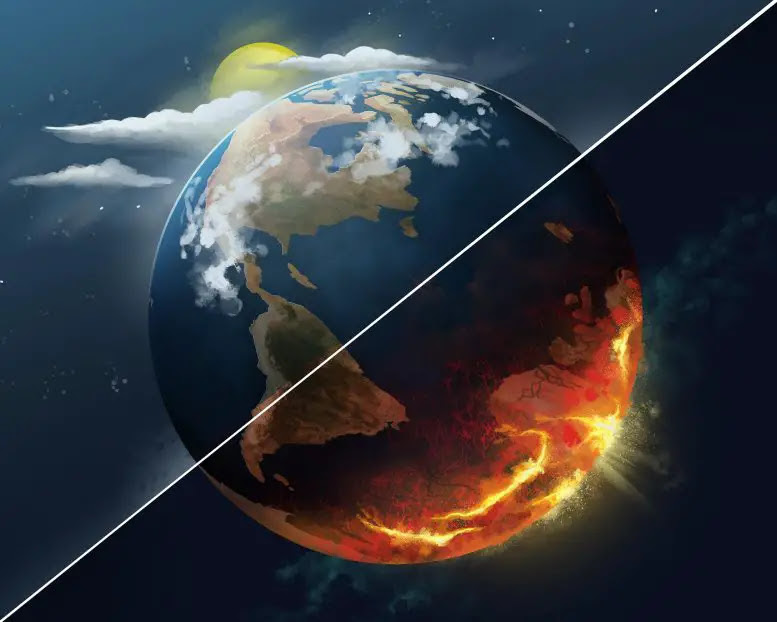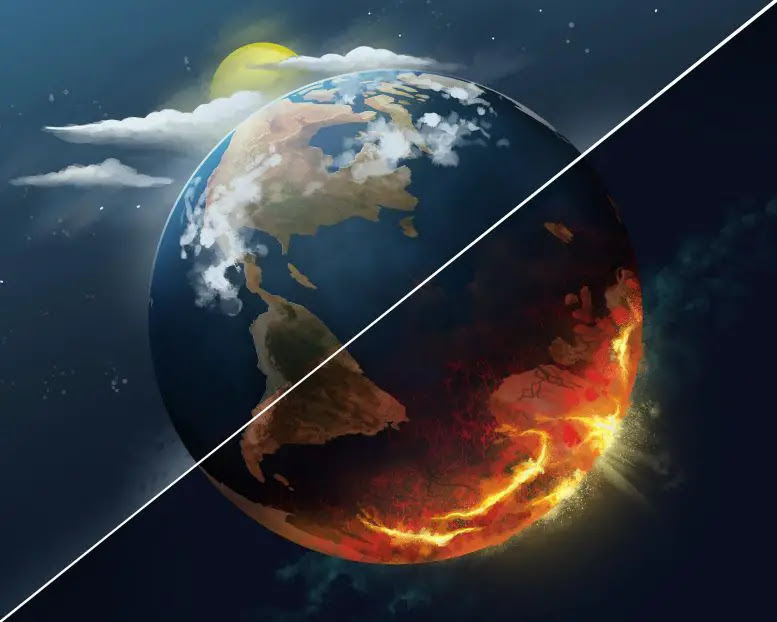
Scientists have always wondered whether the climate that preceded the Industrial Age thousands of years ago followed a natural trend of cooling or warming. A recent study, published on February 15, 2023, in the journal Nature, updates knowledge on this topic and presents one of the most likely scenarios.
The Earth’s current period of development called the Holocene began about 12,000 years ago. It is characterized by a particularly stable climate compared to previous periods, which allowed civilization to develop without major natural disasters. During the Holocene, climatic indicators such as pollens, ice caps or marine sediments indicate that the average global temperature estimated 9,000 to 6,000 years ago did not exceed +0.7˚C compared to the pre-industrial climate, between 1850 and 1900.
This warm phase is described as the climatic optimum and was followed by a cooling period that reached its maximum between the 16th and 18th centuries, a period referred to as the Little Ice Age. However, this is not demonstrated by climate models and simulations instead show a gradual warming trend throughout the Holocene on the order of +0.5˚C.
This discrepancy between paleoclimate data and computer modelling is known in the scientific community as the Holocene temperature conundrum. In the new study, the scientists synthesized existing work and by cross-referencing the different information available, climate archives, models and theoretical data, they could only confirm the high uncertainty regarding the shape of the climate curve during the Holocene.

Despite this uncertainty, the researchers succeeded in proposing a scenario that seems to be the most probable given the information gathered.
According to this scenario, the climate would have reached an optimum about 6,000 years ago, with a slightly reduced ice pack in the Arctic and more developed vegetation in now-desert areas such as the Sahel, but the maximum deviation would rather be around +0.4˚C, below the optimum given by paleoclimatic indicators.
For all that, climate models tend to underestimate the feedbacks that amplify global warming. By sorting and isolating models that correctly capture feedback related to ocean ice and vegetation, the research team was able to observe a valid match with paleoclimate data, showing a temperature optimum followed by a slow cooling until the industrial era.
Darrell Kaufman, the study’s lead author, says that models are the only source of detailed quantitative climate predictions, and their fidelity is essential for planning the most effective strategies to mitigate and adapt to climate change. He also says that more research will be needed to definitively solve the puzzle and that quantifying the Earth’s average temperature when some places were warming while others were cooling is a challenge.




